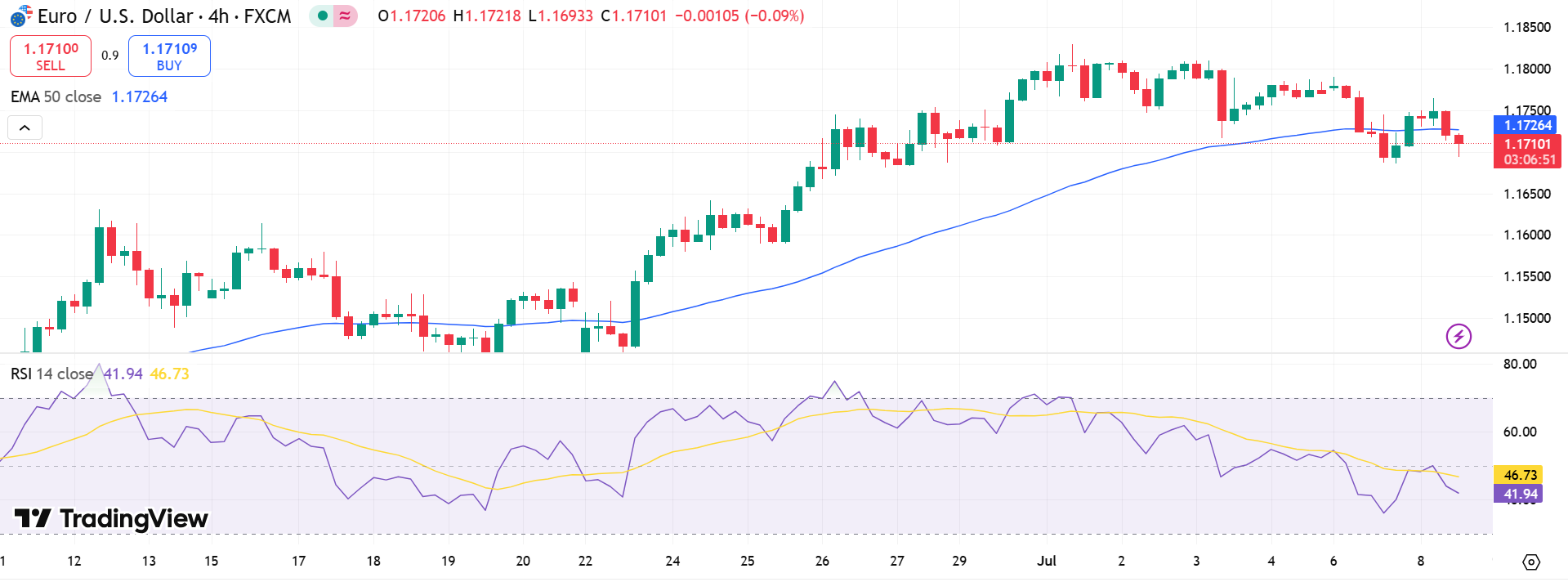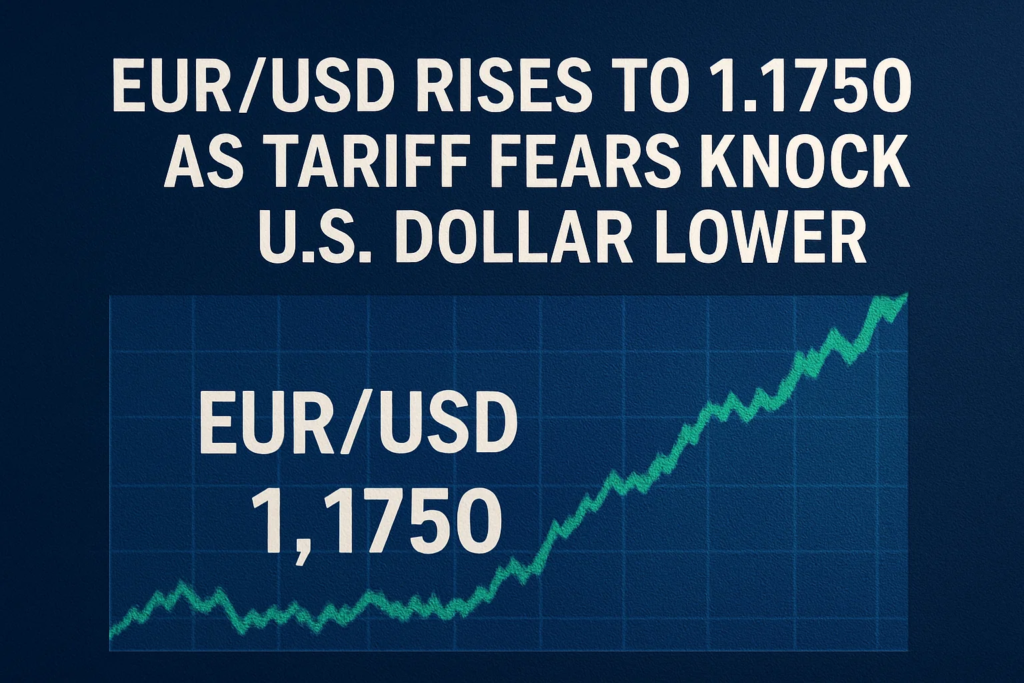The EUR/USD currency pair climbed to the 1.1750 mark in Tuesday’s European session, propelled by mounting pressure on the U.S. Dollar. This upward movement is largely fueled by market skepticism surrounding U.S. trade policy, particularly renewed concerns over tariffs announced by President Trump.
Traders reacted swiftly to the lack of clarity from Washington, where shifting rhetoric on tariffs against Japan and South Korea has ignited risk aversion. Meanwhile, optimism around a potential EU–U.S. trade agreement lent further support to the euro. This mix of geopolitical tension and regional economic hope drove the pair to test levels not seen since early July 2025.
Technical indicators paint a bullish picture: the Relative Strength Index (RSI) hovers near 61, suggesting continued buying momentum. Additionally, the Average Directional Index (ADX) above 33 points to a solid upward trend.
Key Levels in Focus for EUR/USD Traders
As the euro gains ground, several technical milestones shape near-term strategy:
- Immediate resistance stands at 1.1830, the high from July 1.
- Additional resistance levels include 1.1815 (Sept 2018) and 1.1852 (June 2018 peak).
- On the downside, support is found at 1.1428, the 55-day Simple Moving Average (SMA).
- Further support sits at 1.1210 (May 29 low) and 1.1064 (May 12 floor), just above the key 1.1000 psychological level.
These levels offer a roadmap for both bullish and bearish positioning, particularly as macro developments unfold.
Market Risks and Central Bank Signals
The euro’s advance comes despite earlier weakness that saw EUR/USD dip to 1.1680, triggered by a surge in both U.S. and German bond yields. Meanwhile, the Federal Reserve has held its policy rate at 4.25%–4.50%, signaling 50 basis points of easing in the second half of the year—reflecting expectations of a cooling U.S. economy.

Across the Atlantic, the European Central Bank (ECB) moved its deposit rate down to 2.00%, with President Christine Lagarde tying future rate cuts to external demand trends. These divergent but dovish tones from both central banks suggest that policy-driven volatility will continue to shape forex dynamics.
Key Upcoming Data Releases:
- July 8: Germany’s Balance of Trade
- July 10: Final Inflation Rate (June)
- July 11: German Current Account and Wholesale Prices
As trade tensions persist and global growth remains uncertain, traders will be closely watching both economic releases and diplomatic developments for direction.


